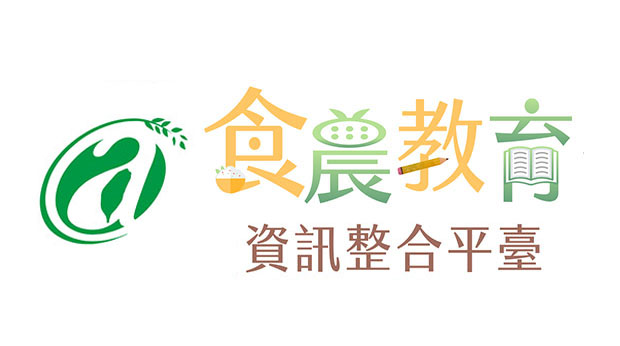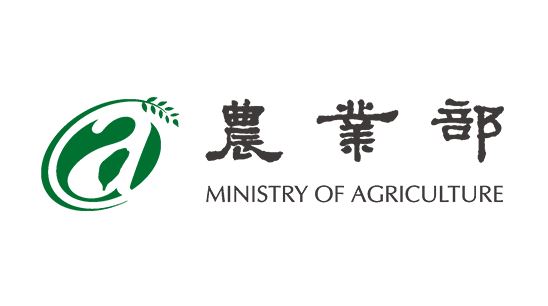栽培方式對黨參植株各部位的黨參炔苷及抗氧化能力之影響--參考文獻
參考文獻
1.方明、石云峰、焦炬焰 2002 中藥黨參抗應激作用的研究 遼寧藥物與臨床 5(1):32-33。
2.何春雨、藺海明、馬占川、漆琚濤 2004 黨參立體栽培的產量效應及其因子廻歸與相關分析 甘肅科技 5(20):146-148。
3.李欣、薛治浦、朱文學 2011 丹參不同部位總酚酸和總黃酮含量分析及其抗氧化活性研究 食品科學32(3):108-111。
4.陳慧慧、牛偉霞、李士棟、張淹、趙紅燕、鄭海榮 2014 HPLC測定不同產地黨參中黨參炔苷的含量 食品與藥品 16(1):37-39。
5.黃圓圓、張元、康利平、余意、郭蘭萍 2018 黨參屬植物化學成分及藥理活性研究進展 中草藥49(1):239-250。
6.張同吳 2010 不同栽培環境及種植期對黃芩產量與品質之影響 花蓮區農業改良場研究彙報 28:1-8。
7.張同吳 2013 不同生育期及收穫期對丹參產量與有效成分含量之影響 花蓮區農業改良場研究彙報31:43-51。
8.張同吳 2014 當歸、丹參優良農業操作栽培體系之建立及其有效成分生理活性之研究 國立臺灣大學 生物資源暨農學院農藝學系博士論文 台北。
9.張同吳 2017 栽培密度及耕作制度對丹參產量與有效成分含量之影響 花蓮區農業改良場研究彙報35:23-31。
10.Bamba, B.S.B., J. Shi, C.C. Tranchant, S.J. Xue, C.F. Forney and L.T. Lim. 2018. Influence of extraction conditions on ultrasound-assisted recovery of bioactive phenolics from blueberry pomace and their antioxidant activity. Molecules. 23:1685-1701.
11.Blois, M.S. 1958. Antioxidant determinations by the use of a stable free radical. Nature.181(4617):1199-1200.
12.Bruni, R. and G. Sacchetti. 2009. Factors affecting polyphenol biosynthesis in wild and field grown St.John's Wort (Hypericum perforatum L. Hypericaceae/Guttiferae). Molecules. 14(2):682-725.
13.Cai, J., M.A. Ashraf, L. Luo, and H. Tang. 2017. Effects of Codonopsis pilosula water extract on microRNA expression profile in D-galactose-induced senile mice. Pak. J. Pharm. Sci. 30:1179-1183.
14.Chang, K.S., N.H. Lee, W.W. Kuo, W.S. Hu, M.H. Chang, F.J. Tsai, K.H. Tsai, Y.S. Yang, T.S. Chen, andC.Y. Huang. 2014. Dung-Shen downregulates the synerGIStic apoptotic effects of angiotensin II plus leu 27-IGF II on cardiomyoblasts. Acta. Cardiol. Sin. 30(1):56-66.
15.Chen, W., Z. Jia, M.H. Pan, and P.V. Anandh Babu. 2016. Natural products for the prevention of oxidative stress-related diseases: mechanisms and strategies. Oxid. Med. Cell. Longev. 2016:4628502.
16.Chen, M., Y. Li, Z. Liu, Y. Qu, H. Zhang, D. Li, J. Zhou, S. Xie, and M. Liu. 2018. Exopolysaccharides from a Codonopsis pilosula endophyte activate macrophages and inhibit cancer cell proliferation and migration. Thorac. Cancer. 9(5):630-639.
17.Fu, Y.P., L.X. Li, B.Z. Zhang, B.S. Paulsen, Z.Q. Yin, C. Huang, B. Feng, X.F. Chen, R.R. Jia, X. Song, X.Q. Ni, B. Jing, F.M. Wu, and Y.F. Zou. 2018. Characterization and prebiotic activity in vitro of inulin-type fructan from Codonopsis pilosula roots. Carbohydr. Polym. 193:212-220.
18.Genova, G., R. Tosetti, and P. Tonutti. 2016. Berry ripening, pre-processing and thermal treatments affect the phenolic composition and antioxidant capacity of grape (Vitis vinifera L.) juice. J. Sci. Food Agric. 96(2):664-671.
19.He, L.X., Z.F. Zhang, B. Sun, Q.H. Chen, R. Liu, J.W. Ren, J.B. Wang, and Y. Li. 2016. Sea cucumber (Codonopsis pilosula) oligopeptides: immunomodulatory effects based on stimulating Th cells, cytokine secretion and antibody production. Food Funct. 7(2):1208-1216.
20.Hu, X.Y., F.Y. Qin, X.F. Lu, L.S. Zhang, and Y.X. Cheng. 2018. Three new polyynes from Codonopsis pilosula and their activities on lipid metabolism. Molecules. 23(4): 887-894.
21.Kim, E.Y., J.A. Kim, H.J. Jeon, S. Kim, Y.H. Kim, H.Y. Kim, and W.K. Whang. 2014. Chemical fingerprinting of Codonopsis pilosula and simultaneous analysis of its major components by HPLC-UV. Arch. Pharm. Res. 37(9):1148-1158.
22.Li, J., T. Wang, Z. Zhu, F. Yang, L. Cao, and J. Gao. 2017. Structure features and anti-gastric ulcer effects of inulin-type fructan CP-A from the roots of Codonopsis pilosula (Franch.) Nannf. Molecules. 22(12):2258-2268.
23.Liguori, I., G. Russo, F. Curcio, G. Bulli, L. Aran, D. Della-Morte, G. Gargiulo, G. Testa, F. Cacciatore, D. Bonaduce, and P. Abete. 2018. Oxidative stress, aging, and diseases. Clin. Interv. Aging. 13:757-772.
24.Liu, C., J. Chen, E. Li, Q. Fan, D. Wang, P. Li, X. Li, X. Chen, S. Qiu, Z. Gao, H. Li, and Y. Hu. 2015. The comparison of antioxidative and hepatoprotective activities of Codonopsis pilosula polysaccharide (CP) and sulfated CP. Int. Immunopharmacol. 24(2):299-305.
25.Luo, Y., W.L. Li, W.H. Huang, X.H. Liu, Y.G. Song, and H.B. Qu. 2017. Rapid quantification ofmulti-components in alcohol precipitation liquid of Codonopsis Radix using near infrared spectroscopy (NIRS). J. Zhejiang Univ. Sci. B. 18(5):383-392.
26.Ming, K., Y. Chen, F. Yao, J. Shi, J. Yang, H. Du, X. Wang, Y. Wang, and J .Liu. 2017. Phosphorylated Codonopsis pilosula polysaccharide could inhibit the virulence of duck hepatitis A virus compared with Codonopsis pilosula polysaccharide. Int. J. Biol. Macromol. 94:28-35.
27.Qi, H.Y., R. Wang, Y. Liu, and Y.P. Shi. 2011. Studies on the chemical constituents of Codonopsis pilosula.Zhong Yao Cai. 34(4):546-548.
28.Qin, T., Z. Ren, D. Lin, Y. Song, J. Li, Y. Ma, X. Hou, and Y. Huang. 2016. Effects of selenizing Codonopsis pilosula polysaccharide on macrophage modulatory activities. J. Microbiol. Biotechnol. 26(8):1358-1366.
29.Salem, A.Z.M., S. López, and P.H. Robinson. 2012. Plant bioactive compounds in ruminant agriculture – Impacts and opportunities. Anim. Feed Sci. Technol. 176(1-4):1-4.
30.Singh, B., H. Song, X.D. Liu, M. Hardy, G.Z. Liu, S.P. Vinjamury, and C.D. Martirosian. 2004. Dangshen (Codonopsis pilosula) and Bai guo (Gingko biloba) enhance learning and memory. Altern. Ther. Health Med. 10(4):52-56.
31.Szymanska, R., P. Pospisil, and J. Kruk. 2016. Plant-derived antioxidants in disease prevention. Oxid. Med.Cell. Longev. 2016:1-2.
32.Vagiri, M., S. Conner, D. Stewart, S.C. Andersson, S. Verrall, E. Johansson, and K. Rumpunen. 2015.Phenolic compounds in blackcurrant (Ribes nigrum L.) leaves relative to leaf position and harvest date. Food Chem. 172:135-142.
33.Wakana, D., N. Kawahara, and Y. Goda. 2013. Two new pyrrolidine alkaloids, codonopsinol C and codonopiloside A, isolated from Codonopsis pilosula. Chem. Pharm. Bull (Tokyo). 61(12):1315-1317.
34.Wallace, R.J., W. Oleszek, C. Franz, I. Hahn, K.H. Baser, A. Mathe, and K. Teichmann. 2010. Dietary plant bioactives for poultry health and productivity. Br. Poult. Sci. 51(4):461-487.
35.Wang, Z.T., T.B. Ng, H.W. Yeung, and G.J. Xu. 1996. Immunomodulatory effect of apolysaccharide-enriched preparation of Codonopsis pilosula roots. Gen. Pharmacol. 27(8):1347-1350.
36.Wang, Z.T., Q. Du, G.J. Xu, R.J. Wang, D.Z. Fu, and T.B. Ng. 1997. Investigations on the protective action of Condonopsis pilosula (Dangshen) extract on experimentally-induced gastric ulcer in rats. Gen. Pharmacol. 28(3):469-473.
37.Xin, T., F. Zhang, Q. Jiang, C. Chen, D. Huang, Y. Li, W. Shen, Y. Jin, and G. Sui. 2012. The inhibitory effect of a polysaccharide from Codonopsis pilosula on tumor growth and metastasis in vitro. Int. J. Biol. Macromol. 51(5):788-793.
38.Yang, C., Y. Gou, J. Chen, J. An, W. Chen, and F. Hu. 2013. Structural characterization and antitumor activity of a pectic polysaccharide from Codonopsis pilosula. Carbohydr. Polym. 98(1):886-895.
39.Yoo, C.S. and S.J. Kim. 2013. Methanol extract of Codonopsis pilosula inhibits inducible nitric oxide synthase and protein oxidation in lipopolysaccharide-stimulated raw cells. Trop. J. Pharm. Res. 12(5):705-710.
40.Zeng, H., S. Su, X. Xiang, X. Sha, Z. Zhu, Y. Wang, S. Guo, H. Yan, D. Qian, and J. Duan. 2017.Comparative analysis of the major chemical constituents in Salvia miltiorrhiza roots, stems, leaves and flowers during different growth periods by UPLC-TQ-MS/MS and HPLC-ELSD methods. Molecules. 22(5):771-786.
41.Zhang, P., L. Hu, R. Bai, X. Zheng, Y. Ma, X. Gao, B. Sun, and F. Hu. 2017. Structural characterization of a pectic polysaccharide from Codonopsis pilosula and its immunomodulatory activities in vivo and in vitro. Int. J Biol. Macromol. 104:1359-1369.
知識樹分類
消費者知識庫 > 園藝類 > 蝴蝶蘭
- 臺南區農業專訊129期-2024世界蘭花會議 暨臺灣國際蘭展介紹 113/10/09
- 臺南區農情月刊333期-臺‘蘭’四百,2024世界蘭展盛大開幕,本場蝴蝶蘭再獲佳績113/03/08
- 臺南區農業專訊 126期-暢遊蘭海~淺談蘭花分類-下篇112/12/26
- 臺南區農業專訊126期-臺日蝴蝶蘭接力栽培 與日本蝴蝶蘭應用現況112/12/26
- 苗栗場農情月刊第286期 - 蠶蛹與天敵昆蟲研發成果大放異彩112/09/18
- 蝴蝶蘭 ‘臺南 1 號’ 之育成112/08/16
- 臺南區農業專訊第124期-暢遊蘭海~淺談蘭花分類 (上篇)112/08/16
- 臺南區農業專訊第123期- 2022東京蘭展介紹112/04/24
- 臺南區農業專訊第123期-春光‘蘭染’歸何處-蝴蝶蘭切花保鮮與染色112/04/24
- 【千載「蘭」逢、欣欣向「龍」】2023 國際蘭展盛況空前,本場蝴蝶蘭品種再獲佳績112/03/16






